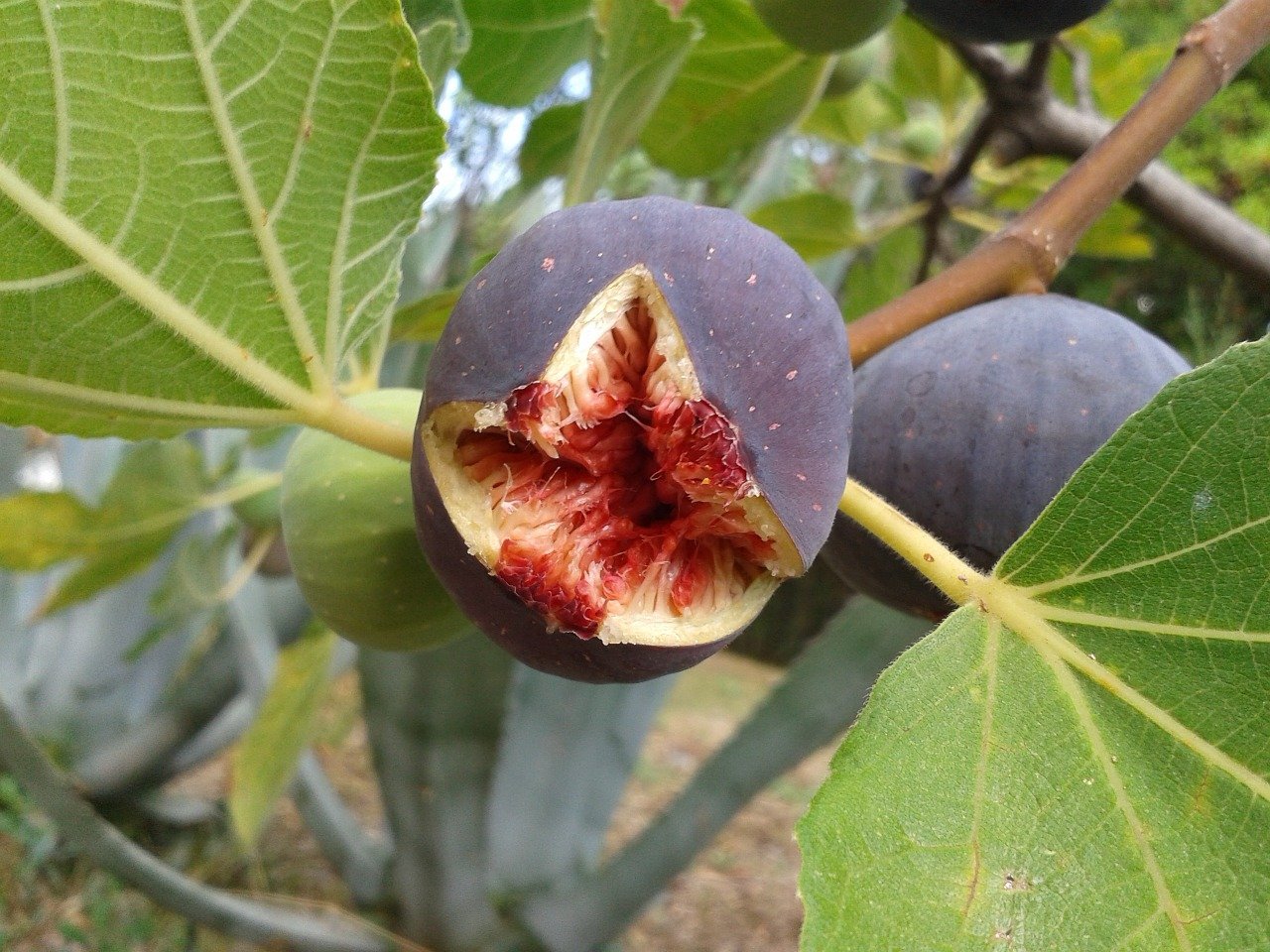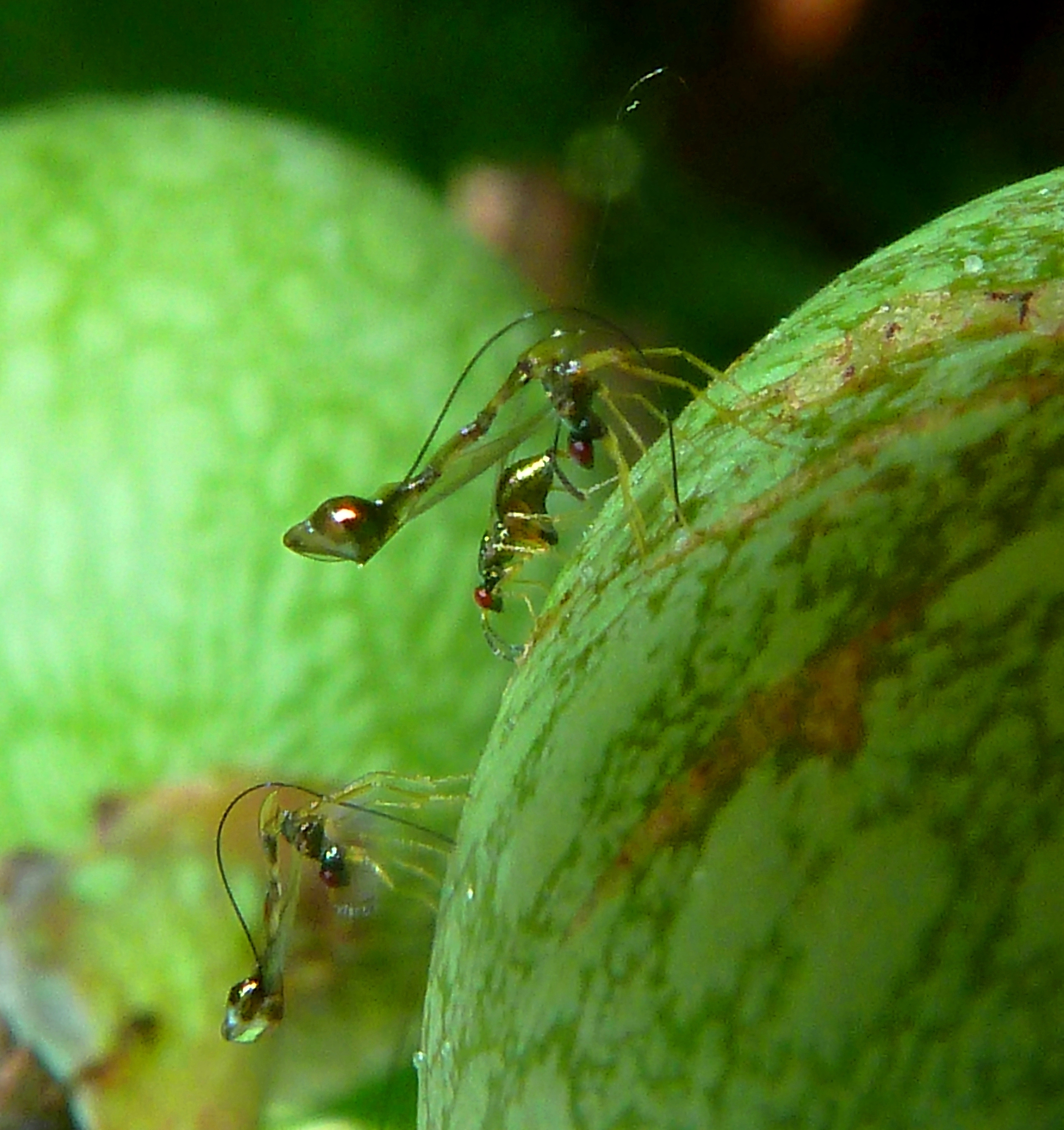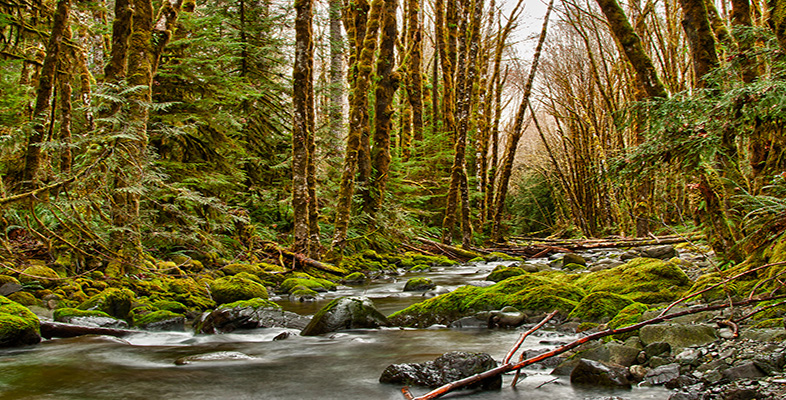Find out more about The Open University's Science courses and qualifications
Earth is a set of interconnected systems where changes in one small thing can have knock-on effects to many othersEverything is connected to everything else. That’s one of the themes that runs through A Perfect Planet. The Earth is a set of interconnected systems where changes in one small thing can have knock-on effects to many others. One of the stories in the series is about tropical fig trees, the birds and primates that feed on their fruit, and the tiny wasps that are fundamental to their life cycles. In my mind the tale of fig trees and fig wasps is one of the most incredible in all of nature. It shows just how interconnected the natural world is and how little things can make big differences.
To understand how figs and fig wasps interact, it’s important to realise that a fig isn’t a fruit in the way that apples, cherries or plums are. Instead it starts out as a complicated and unique flower head. Think of a dandelion flower. Each of those lovely yellow petals is in fact a tiny individual flower with all the petals joined into a narrow tube. Now imagine that same dandelion flower never opened; that it was fastened at the top, and instead swelled up as the flowers grew inside. A fig is a bit like that. The round, outer body of the fig is like the base of the dandelion flower (the white ‘pin cushion’ left after you’ve blown the seeds from a dandelion clock), turned inside out, protecting the flowers inside. Access to the flowers is through a tiny hole that is blocked by several layers of plant tissue. The only way to pollinate the fig is to squeeze through this tiny gap and get stuck inside. So why would a plant evolve a flower that is so difficult to pollinate? Aren’t flowers supposed to be showy and attractive? The reason is that if a plant can ensure that very few things, in extreme cases a single species, can pollinate it, it can evolve specific, targeted and efficient strategies to attract and support its pollinator. The difficulty of a pollinator accessing the flowers is balanced by the fact that that pollinator will only take pollen to another flower from the same species – it won’t risk being wasted going to another type of flower. In turn the pollinator evolves structures or strategies to maximise the benefits it gets from its target plant species. Many types of plants have evolved close relationships with individual pollinator species, but few quite so intricate as figs and fig wasps.
Fig wasps can’t complete their lifecycle without figs; fig trees can’t complete theirs without fig wasps.Pollinating a fig begins when a female fig wasp, which may be just a few millimetres long and laden with pollen, crawls through that tiny hole in the base of the fig. To find its way through to the inside of the fig it may need to bite off its own limbs. Once inside, the pollen pollinates some of the tiny individual flowers and the wasp lays eggs in the bases of some others, where the seed should develop. The fig sacrifices some of its seed production to provide nursery beds for the wasp’s eggs and larvae to develop. As these larvae develop into adults, the wingless males, which develop first, visit the growing females, fertilise them and, as their dying act, tunnel out of the fig. When the females grow to maturity, they work their way out of their growth chamber, picking up pollen from other flowers, and exit through the holes left by their male siblings. Seeds develop in the pollinated flowers, the fig matures and becomes sweet and attractive to birds and mammals that eat it and disperse the seeds in their faeces. The emerged females fly to another fig tree, dismember themselves to crawl into a fig and the cycle starts again. Pity the males who know no life outside the confines of a fig. Pity also the females who must endure self-mutilation to complete their lifecycle. Such is the hand that evolution has dealt these tiny insects. Fig wasps can’t complete their lifecycle without figs; fig trees can’t complete theirs without fig wasps. This strange marriage has led to figs being one of the most diverse groups of trees in the tropics. Small, chance variations that affect the characteristics of a fig tree, or of its pollinator get hard-wired in as the two co-evolve over time, creating more and more splits in the fig family tree. Fig wasps too are extremely diverse with each species of fig being pollinated by only one or a very few species of wasps. The figs we eat are just one species, with several varieties bred to grow fruit without needing to be pollinated at all.

So much for figs and their pollinators. What is remarkable is how this unique relationship has made fig trees ‘keystone’ elements in tropical forests. The new female wasps need new figs to pollinate and lay their eggs in, even as their original host’s fruits are maturing. So at any one time there must be trees with figs at different stages of their development in the forest. Larger animals that use figs as food then have a year-round supply, even through lean seasons where other sources of food are scarce. Without figs their ability to survive would be compromised. The forests would not be able to support the diversity and abundance of birds or mammals that they do. In turn these mobile consumers spread the seeds of figs and other fruit trees far and wide, maintaining the diversity of the forest. Some figs grow as independent trees but many are ‘stranglers’ that begin their life germinating in the crook of another tree’s branches, high above the forest floor. They send down roots that become trunks and grow to smother their hosts, often spreading to become giant, elephantine Ents. Some of the world’s biggest trees are figs that owe their existence to a tiny wasp that pollinated a hidden flower to create a seed no bigger than a pinhead which found its way through an animal’s gut and was deposited to germinate, sheltered in the branches of an unsuspecting host.
With more than 750 species of figs there are bound to be many unknown species and many more intricate relationships to be unearthed.But this strange story does not end there. For back inside the figs, something else is happening. If nature abhors a vacuum, it also adores an opportunity, and the developing wasp larvae and the other flowers are lots of little opportunities to be exploited. Alongside the pollinating fig wasps, whole communities of other wasps have evolved to take advantage of them. There are parasites with improbably long ‘ovipositors’ – the syringe-like extension at the tip of their abdomen – sometimes many times longer than their body, that pierce through the outside of the fig and deposit eggs in the flowers. The larvae of some develop and eat the pollinator larvae, while others consume the fig flowers themselves without playing their part and pollinating the fig. Others are parasitoids: species that lay eggs in the pollinator larvae that hatch and eat their host from the inside out. In fact the interactions between fig wasps and between wasps and fig trees have many more subtleties and complexities than we can cover here. With more than 750 species of figs there are bound to be many unknown species and many more intricate relationships to be unearthed.
These remarkable natural stories play out in tropical forests around the world, but they simply reflect the way that species interact and ecosystems function anywhere on Earth. Our planet and its nature is complex, sometimes fascinatingly so, sometimes unfathomably so. There are many similarly amazing connections happening around you, in your garden, maybe in the soil under your lawn, some of which may have profound implications for how whole ecosystems function, and many of which are yet to be discovered.



Rate and Review
Rate this article
Review this article
Log into OpenLearn to leave reviews and join in the conversation.
Article reviews